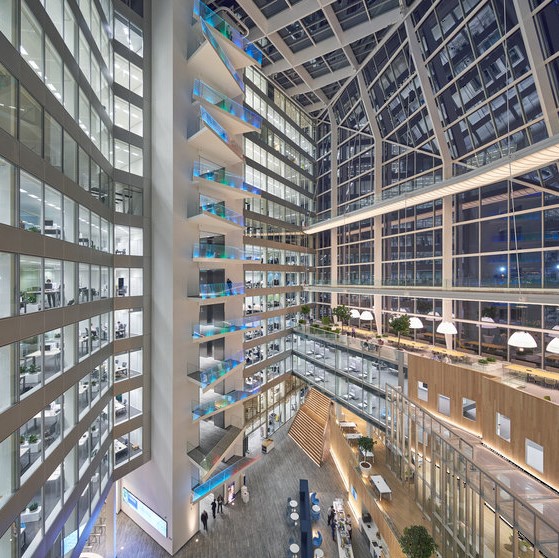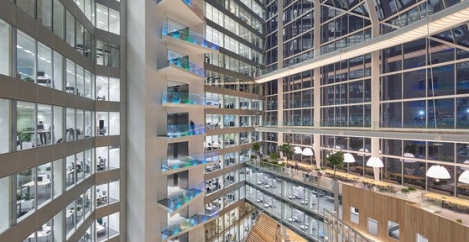October 7, 2019
Workplace experience fails to meet expectations in many new projects
 The latest report from workplace analysts Leesman explores the success rate of workplace change projects while analysing the factors behind why many fail. The Workplace Experience Revolution Part 2: Do new workplaces work is the product of a nine-year analysis across 557,959 employee responses in 3,932 workplaces worldwide. The first part of the study, published in 2018, unearthed what it claimed was a series of mission-critical ‘super drivers’ that provide the foundations for outstanding employee workplace experience. Part 2 takes this investigation further by exploring the challenges and stresses that organisations encounter when it comes to delivering employee experience in a new workplace.
The latest report from workplace analysts Leesman explores the success rate of workplace change projects while analysing the factors behind why many fail. The Workplace Experience Revolution Part 2: Do new workplaces work is the product of a nine-year analysis across 557,959 employee responses in 3,932 workplaces worldwide. The first part of the study, published in 2018, unearthed what it claimed was a series of mission-critical ‘super drivers’ that provide the foundations for outstanding employee workplace experience. Part 2 takes this investigation further by exploring the challenges and stresses that organisations encounter when it comes to delivering employee experience in a new workplace.
The findings from the latest research are drawn from 346 spaces that have been measured by Leesman specifically in the post-occupancy phase after a workplace relocation or refurbishment. This group, which comprises 84,158 individual employee responses, provided Leesman with an opportunity to investigate where workplace change projects succeed or fail at a scale never before undertaken.
Leesman’s data challenges McKinsey & Company’s often-cited statistic that ‘70 percent of change management projects fail’. While 41 percent of new workplaces deliver an exceptional employee experience (with a Leesman Index effectiveness score (Lmi) of 70 or above), 40 percent have not maximised their full potential (scoring between 60-60.9), and 19 percent are failing their occupants (recording an Lmi below 60).
Key findings:
Working productively: ‘The Workplace Experience Revolution Part 2’ claims that 66.5 percent of respondents in new workplaces agree that their workplace enables them to work productively. Viewed in reverse, however, this means that one in three respondents cannot agree that their new workplace allows them to be productive.
Collaborative and concentrative working: Workplace change projects generally succeed in collaborative areas such as bringing people together and supporting interaction. ‘Planned meetings’ scores 87, ‘informal social interaction’ scores 84.4, and ‘accessibility to colleagues’ scores 72.3. New workplaces, however, notably fall short when it comes to supporting individual and concentrative tasks. Employees’ satisfaction with ‘private conversations’ in the new workplaces only manages to achieve an Lmi of 59. Meanwhile, satisfaction with ‘noise levels’ delivers the most damning results, with a score of just 33.4 on the Leesman Index across new workspaces.
Flexible or designated seating: The data suggests that neither flexible nor designated workspace will guarantee a successful change project. It’s all about providing employees with the right environment for the right activities. Employees with less complex roles, for example, report less improvement following workplace change projects compared to their peers with more complex roles.
Leesman’s report suggests that a growing number of organisations understand the variation in their employees’ work tasks and are building more variety into their workplaces as a result. The data suggests, however, that organisations risk incorporating more variety at the detriment of those who primarily do individual desk-based work.
Tim Oldman, Leesman CEO, said: “The data unveiled in part two of our Workplace Experience Revolution report should concern business leaders. The results are indicative of a workplace industry that is all too ready to jump on the latest industry trends without a proper understanding of what their employees do and need in their workplaces. A workplace change project provides organisations with an opportunity to reimagine their employees’ experience at work in a way that can ignite individual and organisational performance. But success hinges on supporting what employees are doing and how they are doing it. If leadership teams fail to recognise the needs of their people, they risk delivering workplace changes that hinder rather than help employee experience.”
Image: The Edge in Amsterdam, an example of a workplace committed to providing a great experience.














